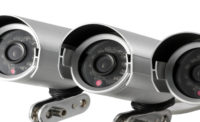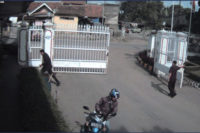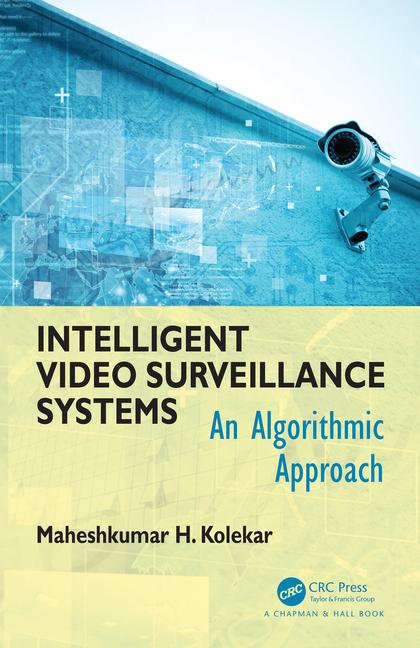‘Tiering’ Up about Video Storage

Security video storage is an essential element in a security video system redesign at Sarasota (Florida) County School District, where one challenge was to protect the system from lightning strikes.





Storage costs money. With the growing attraction of megapixel cameras coupled with expanding security video uses ranging from forensics to marketing, the storage price tag can go up and up. Then, depending on the devices and their closeness to the IT operation, there is the cost of running and cooling the gear as well as the investment in backup and redundant storage systems.
Still, storing and retrieving security video has come a long way from the days of videocassettes. Today, there is in-the-camera storage, more just-in-case than primary. There are digital video recorders (DVRs) and network video recorders (NVRs). As security increasingly depends and works with IT, its infrastructure, servers and virtual storage techniques have come into play. Then there is the trend to off-site storage, whether in the cloud, third-party managed video or analysis of video for business purposes beyond security.
Overall, security video storage and business data more generally, is now moving to a strategy, ironically, that replicates the old days of paper and records retention.
Of course, these days old ideas need new buzz words.
A STEPPED APPROACH TO STORAGE
Welcome to tiering storage, which, according to an analyst insight report from the Aberdeen Group, is showing increasing adoption as a way to reduce the cost of storage without affecting the overall performance of the system. In the Aberdeen report, storage tiering advocates using the fastest, most reliable storage medium to house the newest and most important security video data. As the video data ages and its usefulness diminishes, it is transferred to slower, less reliable and less expensive storage devices.
Like their IT colleagues, enterprise security leaders have three basic elements when choosing the make-up of storage and tiering: the storage technology, the speed of the device and the form of redundancy (or RAID, redundant array of independent disks).
While there are no firm numbers on the growth of the amount of security video storage, on average, enterprises generally report that the amount of raw data they have to store is increasing by 32 percent year over year.
Security video standards also now encompass storage, for example, from the Open Network Video Interface Forum (ONVIF), according to Steve Surfaro, with the Forum and at Axis Communications, a founding member along with Bosch Security Systems and Sony Corporation. Its core specification covers video storage devices – configuration, storage and playback of video recordings, in addition to cameras, encoders and video analytics engines.
“It also allows the user to search in a consistent way,” says Surfaro, including virtualized applications, in the cloud and other nonproprietary devices.
THE IMPACT OF IT TECHNOLOGY
Storage does not stand alone, comments Robert O’Rourke of integrator Tesla Systems. Compression/decompression formats such as H.264 have impact on the transmission infrastructure and storage, especially when concerning ingest capability, the ability of storage to keep up with incoming video. He is wrapping up a large project at Dana-Farber Cancer Institute in Boston with American Dynamics technology.
It is obvious that you have to work with IT. Says O’Rourke: “Of course, there can be storage in the camera, but that’s mostly in case if the system goes down. Storage more generally means there is another appliance on the network.”
The Dana-Farber application is a very large system that includes about 300 IP cameras and about 150 analog cameras with all the security video storage in-house. “We often use VideoEdge, an NVR that supports multi-channel audio and dual streaming for a robust enterprise video management solution,” says O’Rourke. Such pre-configured bundled server solutions use an embedded Linux operating system, Web server, as well as user, camera, network and storage management applications.
LIGHTNING CAN STRIKE
Storage was a part of a review of security needs for the Sarasota (Florida) County School District as it moved to developing a centralized security system, according to Darrel Reyka, manager, school police/safety and security, and security technicians Tim Butler and Sean O’Keefe.
The district has 23 elementary schools, a school serving grades K-8, seven middle schools, six high schools, a school for gifted students, two schools serving students with special needs, a center for career and technical education, charter and alternative schools and several support facilities.
“We simply needed a better way to provide security and safety – one that would increase our capability of providing optimum protection by maximizing our use of technology while minimizing the need for on-site security staff at our facilities,” says Reyka. The plan: Install the district-wide surveillance system in two phases. Phase one would consist of establishing core infrastructure at each facility. During phase two, technology will be added to this core.
One unique need was to bring in technology that could overcome lightning. Southwest Florida is known as the lightning capital of the world.
Video surveillance systems are very sensitive to high voltages. Because of this, a lightning strike can cause irreparable damage not only to outdoor cameras but also to data transmission equipment and the ability to ingest the information for storage and retrieval.
The school district already had a fiber infrastructure. As a transmission medium, fiber has advantages over copper cable in a typical transmission configuration. Because the fiber is made of glass and does not carry electrical current, radiate energy or produce heat or sparks, data is retained in the fiber medium. That means any damage caused by a lightning strike will be localized, greatly minimizing potential network repair costs. Camera signals go to the nearest intermediate distribution frame (IDF) where they are transferred to fiber optic transmitters and then sent to head-end DVRs. Some of the transmitters send four digitally encoded video channels over one optic fiber, while others transmit four digitally encoded video channels with two-channel audio and two-channel data over one optic fiber.
The district is already starting to mix in some digital cameras, especially megapixel models that provide higher resolution. This is especially important for playback from storage, lower wiring costs and the ability to cover the same area as two or more analog cameras.
VIRTUALIZATION ADVANTAGES
Not surprisingly, security video storage needs to keep up with general computer advances and video management system designs.
Storage is a huge piece of their solutions, says David Coleman of integrator Avrio RMS Group. “We focus on wide area, highly complex security video applications, and storage can often be about half of a job cost,” he says. “Virtualization lowers the cost of investment – fewer servers, less power and cooling, less equipment out in the field. For cloud storage, there are also real and obvious benefits but you need a big pipe to the cloud.”
When it comes to security video and storage, Coleman believes that public safety applications are leading the way and bringing sophisticated solutions. “We are pulling streaming video from diverse situations,” he says.
Daniel McKinney of SeeView Security agrees about the growth and diversity of storage solutions. In response to demand, the integrator recently launched a unique program to address the needs of large-scale data centers which are increasingly used for cloud computing applications. Such cloud solutions provide enhanced physical security for the data center as well as the individual racks and servers operating within such facilities.
Says McKinney: “We have been providing security and access control systems to large-scale governmental customers for years. We provide data center operators with facility-wide physical security as well as rack/server specific security that the data center operator can provide to its cloud clients either as part of an overall service or on an incremental fee upgrade basis. In addition, we can give cloud clients that want better control and information regarding the security and status of their remote servers a solution regardless of where those servers are located. We find that megapixel IP camera systems can often be used to identify and troubleshoot problems which can often reduce or eliminate the need to send personnel to the data center.”
CLOUD COMPUTING STORAGE
Says Daniel Redmond of Moonblink Communications: “Two of the hottest markets today are video surveillance and cloud computing/storage.” Redmond’s firm, a value-added distributor of wireless and video surveillance solutions, now provides firms such as SeeView with video surveillance as a service (VSaaS), leveraging EMC cloud storage and local network attached storage devices from Iomega. Such offerings reduce the upfront hardware investment as well as the ongoing maintenance and management costs, giving resellers and their enterprise security executives a solution when deploying IP-based video surveillance.
A VSaaS offering enables users to simply connect network cameras and encoders to EMC’s storage platforms. This not only reduces the upfront hardware costs and the expense of running hardware at less than 100 percent utilization, but it also gives businesses the ability to view video surveillance footage from any Internet-connected device. Users can also make use of other network storage devices to have redundant onsite surveillance footage that allows them to stream higher resolution and higher frame rate images locally.
| In the Navy, Storage Rates a Salute |
|
The Naval Ordinance Test Unit (NOTU) at the Cape Canaveral (Florida) Air Force Station supports and tests sea-based weapons in a safe environment. The unit also operates the Navy port at Port Canaveral, supporting submarines and surface ships of the U.S. Atlantic Fleet and of foreign navies as well as the assets of the Military Sealift Command. The unit’s location, which is surrounded by ocean on three sides, poses a challenge for electronic devices to operate dependably due to its corrosive, salt-water environment. Video surveillance at NOTU previously consisted of an outdated system using four black-and-white pan-tilt-zoom (PTZ) cameras, a PTZ controller and four black-and-white video displays tied to – yes – videocassette recorders. So it turned to Millennium Communications, a Samsung Techwin America integrator, to design and install a new system. Millennium opted not to use IP-based network cameras but instead use analog technology, which fully met its needs. The new system includes four weather-resistant PTZ cameras which capture high resolution images and are protected by integrated housings. “We knew that the installation required cameras that combined high performance with outstanding value,” says Mark Soliman of Millennium Communications. The cameras provide video across fiber optic cabling to a Samsung DVR/storage system, providing smart thumbnail and bookmark search capabilities, fast DVD backup and control with intuitive graphical user interface and mouse. It can also accommodate up to two internal SATA HDD disk drives. The system also uses a keyboard PTZ controller to provide system compatibility with multiple protocols. Its intuitive keypad, large LCD window and ergonomic design provide for easy operation. The system is monitored locally on base and uses fiber/RS-485 transmission to control the cameras. |
| Video Storage as a Service |
|
As VSaaS emerges, there are noticeable benefits to the end user’s enterprise and security operation.
|
Looking for a reprint of this article?
From high-res PDFs to custom plaques, order your copy today!












